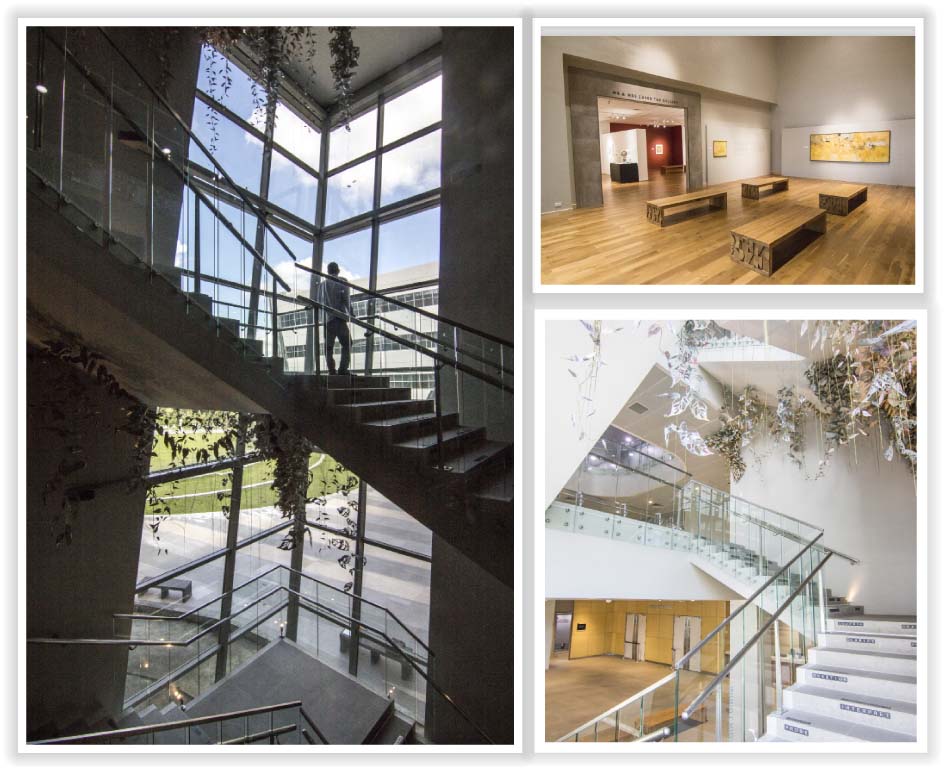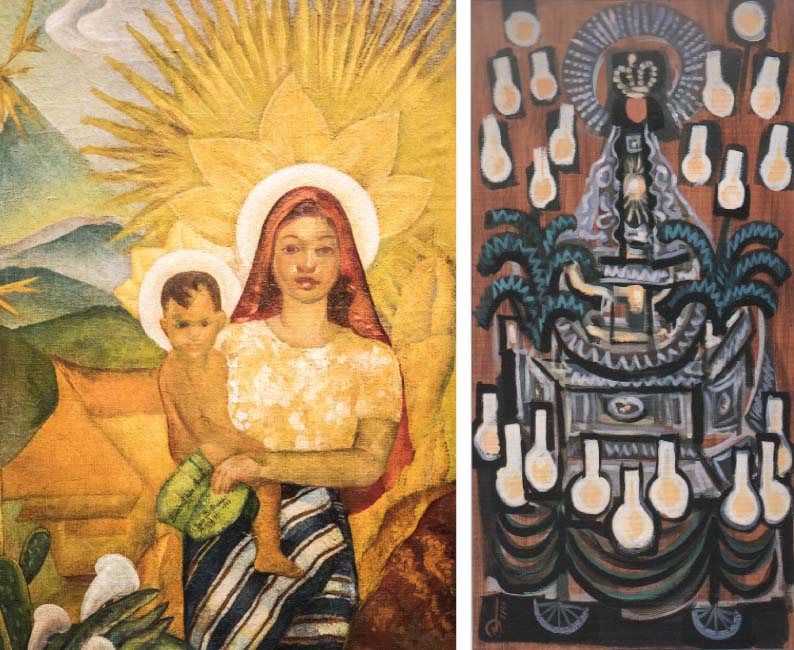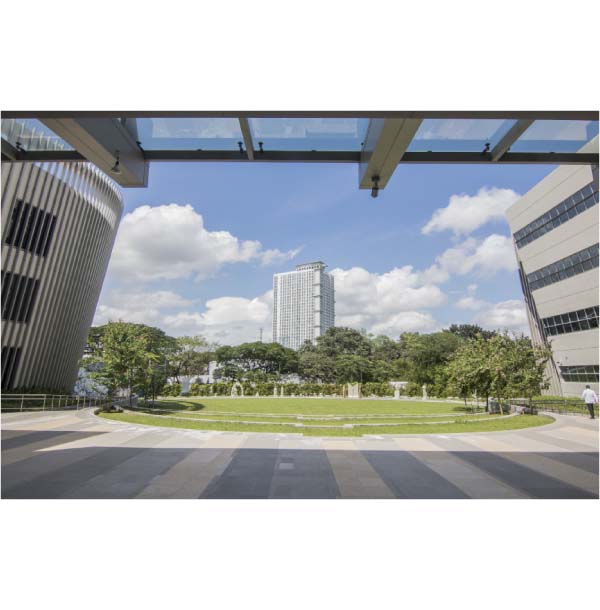
Quezon City’s reputation as an artistic and creative hub was strengthened when the Areté, a futuristic building complex, opened at the Ateneo de Manila University campus in Loyola Heights in 2017. It is also home to the university’s art exhibition space and talent incubation center.
Why is Ateneo interested in raising a new generation of creative Filipino talents? The university’s president, Fr. Jett Villarin, SJ, stated, “I believe that in a global economy, which is constantly driven by new ideas, products and services, creatives will be the new currency of the economy.”
Why Areté as the name of its new art hub? In English, the word refers to a sharp mountain ridge. However, according to the university, in ancient Greek it can mean “excellence guided by principle.”
A search online revealed that the word has links with moral virtue. The Greeks associated Areté with human knowledge, and that the highest human potential is knowledge. Therefore, a man is seen as virtuous if he strives to learn as much as he can about knowledge itself.
Construction of the Areté began in 2015 on what used to be the university’s cornfield. The university chose a design by Filipino architect William V. Cosculluella, comprising two three-story structures linked together by a bridgeway or canopy.
The more conventional-looking wing is the George Ty Learning Innovation Wing. Dedicated to Ty, founder of Metrobank, this part of the Areté houses laboratories and study spaces for various disciplines of the arts, including the kitchens of the Ateneo-Cordon Bleu Culinary Institute.
A unique feature is the “Sandboxes” which are rooms where different talents from various disciplines can come together and solve problems. But, according to Villarin, “They might also just want to play, and in fact, many discoveries come from the spirit of play.”
The futuristic part of the Areté is the Soledad V. Pangilinan Wing. Looking like something straight out of a sci-fi film, the wing is dedicated to the mother of businessman Manny V. Pangilinan and is open to the public.
In contrast to the curves and lines that characterize the building’s exterior, its interior is simple and minimal. The bare concrete interior of the building’s lobby seems to be inspired by the work of Japanese architect Tadao Endo. Despite the heavy use of concrete, there is a sense of lightness, due to the three-story atrium ceiling and floor to ceiling windows.
It is in this wing where exhibition spaces and performance venues of the Areté are located. There is a 900-seat theater named after its sponsor, Korean carmaker Hyundai. But for smaller and more intimate performances, there is also the Black Box Theater. Dedicated to writer and educator Doreen Fernandez, its simple and bare interior allows for greater flexibility in terms of audience seating and stage set up.
This wing is also the home of the Ateneo Art Gallery. During its groundbreaking ceremony in 2014, Villarin boasted that the museum had the biggest collection of modern and contemporary Filipino art in the country. Its permanent collection includes works by well-known Filipino artists, such as Fernando Zobel, Fernando Amorsolo, Fabian de la Rosa, Cesar Legaspi and Onib Olmedo. Also included are recent works by modern artists such as Impy Pilapil, Julie Lluch and Edgar Talusan Fernandez.

But there is more: the museum also houses a collection of prints and drawings dating from the Renaissance to the present day, including works by artists such as Monet, Picasso and Goya. With such an expansive collection of artistic works, Villarin proclaimed in the same speech that the Ateneo Art Gallery will become the country’s version of New York City’s Museum of Modern Art.
The museum moved into its new home in the Pangilinan Wing in October of 2017, where its collections and exhibits are showcased in eight galleries. Its permanent collection is assigned to three galleries on the ground floor.
Those who think that Tsinoys are not interested in the arts will be surprised to find that all three galleries are sponsored by three Tsinoy couples, Mr. and Mrs. Chung Te, Mr. and Mrs. Ching Tan and Ernesto and Susan Tanmantiong.
The museum, however, will not be displaying its permanent collection all at once. Instead, it will rotate them through shows that revolve around a theme.
For example, the current exhibit, titled “Yellow Ambiguities,” combines selected works from the museum’s permanent art collection, along with pre-colonial artifacts, woven textiles by various ethnic groups and religious artworks. The result is a show that tries to explore how Philippine culture perceived the color yellow throughout its history. The idea of rotating the works is good, as it provides an excuse to keep returning to the museum. What is even better is that the museum entrance is free.
Once you have seen the permanent collection, you can move on to five other galleries on the upper floor, where special art shows and short-term exhibits are hosted.
Among these galleries is the Wilson Sy Print and Drawing Gallery, which hosted an exhibit showcasing the museum’s print and drawing collection during my last visit. It is also in these galleries where the works of artists nominated for the Ateneo Art Awards are displayed.

These galleries are also occasionally used as venues for talks. Historian Ambeth Ocampo, for example, has a gallery named after him. It is where he hosts talks on subjects related to history. The museum will also feature a library focusing on fine arts.
There is a green space between the two wings, which doubles as an outdoor amphitheater and a venue for outdoor art installations. Despite its peaceful appearance, this area is controversial, due to the person it was named after, Ignacio Gimenez, who is a known business crony of former president Marcos.
But that is not the only controversy. When the Areté was inaugurated in 2017, one of the attending guests was the former president’s daughter Irene Marcos Araneta.
The resulting firestorm on social media led to the resignation of the museum’s curator, Yael Buencamino. But it is my hope that the university and museum can overcome this initial turbulence and persevere in making the Areté live up to its full potential as one of the metro’s best creative and art hubs.
